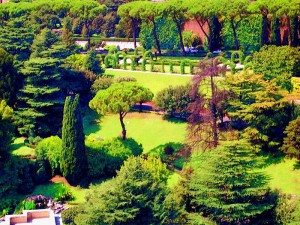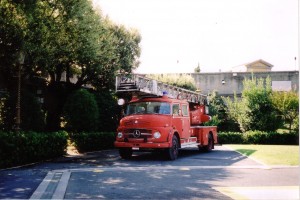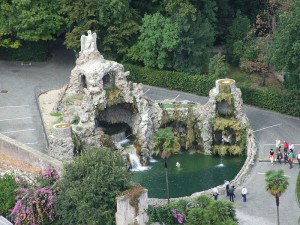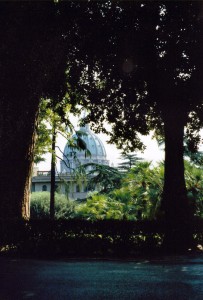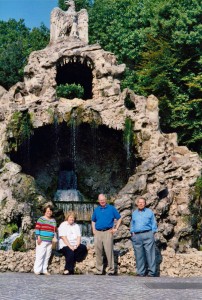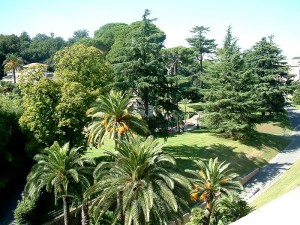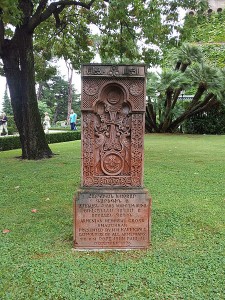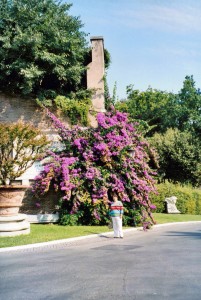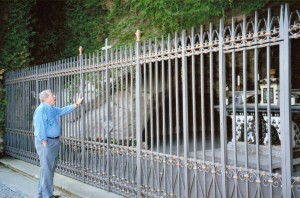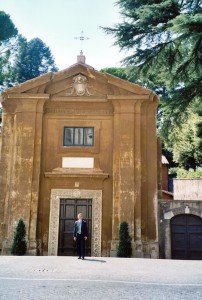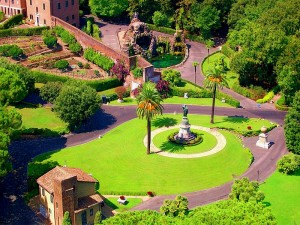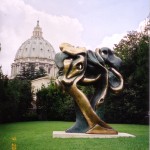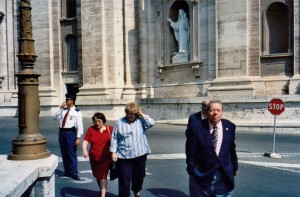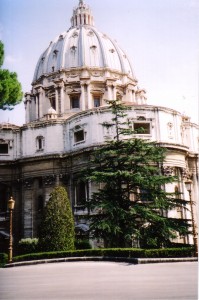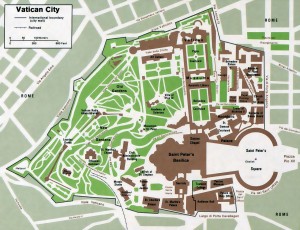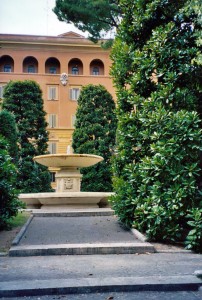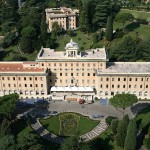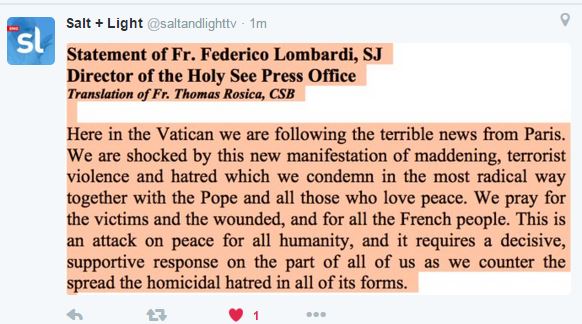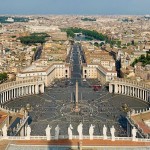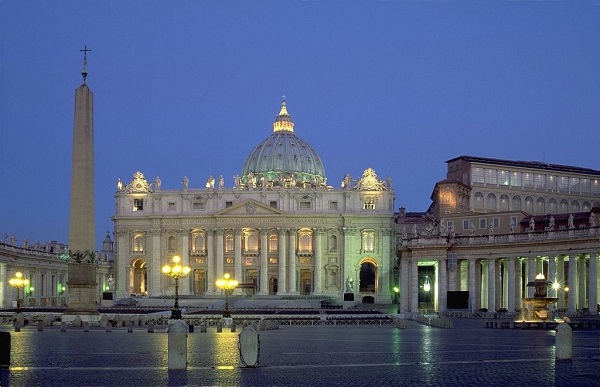By now you’ve probably seen this picture:
It’s the Mater Ecclesiae—the former convent inside the walls of Vatican City where Pope Benedict will reside in quiet prayer.
Four times in the last decade, it has been my privilege to lead a group tour through the Vatican Gardens, where the Mater Ecclesiae is located. I remember its story: The residence has been occupied by a community of cloistered sisters whose mission was to tend a small garden, help with some domestic tasks, and pray for the pope and for the Church. Every five years or so, there would be a change and a new order of religious sisters would move in and assume the ministry of prayer.
But the last order of sisters moved out in November, and renovations began on the building which was destined to become home to the first pope to resign in six hundred years.
Where, exactly, is this house located? Let’s take a look. (CLICK on the map below to see more clearly.)
Vatican City-State, the world’s smallest nation, occupies 109 acres in the middle of Rome, and is bordered on three sides by stone walls. On this map, you can see St. Peter’s Basilica (in brown) on the lower right, with Bernini’s Portico reaching out to wrap its wide arms around the cobblestoned St. Peter’s Square.
The building on the south wall is the Domus Sanctae Marthae (English: St. Martha’s Palace), a hospitality residence; it’s there that the Cardinals will stay while in town for the Conclave. (I’ve been inside the Domus Sanctae Marthae and I’ve got photos; watch this space for a report soon.)
At the north wall, the bulky buildings contain the Musei Vaticani (Vatican Museums). Founded by Pope Julius II in the early 16th century, the Vatican Museums display works from the immense collection built up by the Catholic Church through the centuries, including some of the most renowned classical sculptures and most important masterpieces of Renaissance art in the world. More than five million tourists visit the Museums annually.
Directly behind St. Peter’s Basilica is the small Church of St. Stephen which stands on the spot where, according to tradition, the first deacon St. Stephen suffered martyrdom. In the same area, the long building is the Governatorato, the palace where offices of the Vatican City-State, as well as the residence and private chapel of the prefect, are located.
But look closely: On a hill near the north wall, not far from the Aquilone fountain, is the Mater Ecclesiae (Latin for Mother of the Church). The monastery, named after Jesus’ mother Mary, was erected in the early 1990s at the request of Pope John Paul II, who wanted to have a community of cloistered nuns at the Vatican, whose primary role is to pray for the pope and the Church. The first religious order to occupy the Mater Ecclesiae was the Order of St. Clare, who resided there from 1994 through 1999. They were followed by the Discalced Carmelites (1999-2004), the Benedictine Sisters (2004-2009), and the Visitandine nuns (2009-2012).
The rest of the acreage—some 57 acres—is the Vatican Gardens. There, a guest would encounter winding paths, shrines, bubbling fountains, classic statuary, modern art, and beautiful and rarely seen back views of St. Peter’s Basilica.
As Benedict XVI becomes more frail, his limited mobility may make it difficult to traverse the Gardens; but in the early years of his pontificate, it’s reported that Pope Benedict frequently walked the Garden paths in the afternoons with his personal secretary. On those afternoon walks, he must have come to recognize the unnerving screech of the Gardens’ green mink parrots, common in the evergreen boughs.
Here, from my photo album,are some of the sights I encountered in what will soon be Pope Benedict’s front yard.
